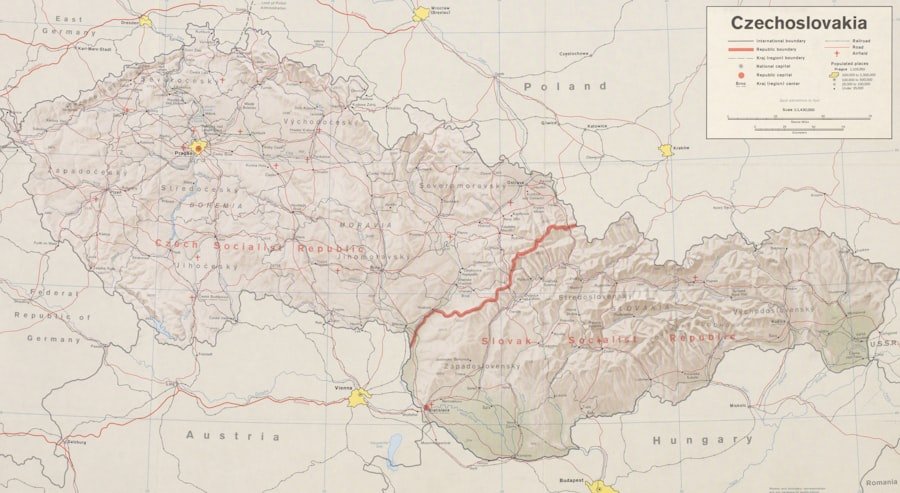Now Reading: The Power of Player-Controlled Pacing in Narratives
-
01
The Power of Player-Controlled Pacing in Narratives
The Power of Player-Controlled Pacing in Narratives

As a passionate gamer and storyteller, I have always been fascinated by the concept of pacing in video games. Pacing refers to the speed at which a narrative unfolds, and when players have control over this aspect, it can significantly alter their experience. Player-controlled pacing allows individuals to dictate the rhythm of the story, creating a more personalized journey.
This dynamic not only enhances engagement but also fosters a deeper connection between the player and the narrative. In an era where interactive storytelling is becoming increasingly prevalent, understanding the nuances of player-controlled pacing is essential for both developers and players alike. In my exploration of this topic, I have come to appreciate how player-controlled pacing can transform traditional storytelling methods.
Unlike passive forms of media, such as films or books, video games offer a unique opportunity for players to influence the flow of the narrative. This interactivity can lead to a more immersive experience, as players are not merely spectators but active participants in the unfolding drama. By examining the impact of pacing on narrative structure, player agency, and overall immersion, I hope to shed light on the importance of this concept in modern game design.
Key Takeaways
- Player-controlled pacing allows players to have a more active role in shaping their narrative experience.
- Pacing has a significant impact on the overall narrative, influencing the emotional and immersive aspects of the story.
- Player agency plays a crucial role in determining the pacing of the game, giving players a sense of control and investment in the story.
- Player-controlled pacing enhances immersion by allowing players to engage with the narrative at their own pace, creating a more personalized experience.
- Balancing pacing and player freedom is an art that requires careful consideration to ensure a satisfying and engaging narrative experience.
Understanding the Impact of Pacing on Narrative
Pacing is a critical element in storytelling that dictates how quickly or slowly events unfold. In video games, pacing can be manipulated in various ways, from the timing of cutscenes to the frequency of player choices. When I think about pacing, I often reflect on how it shapes my emotional response to a story.
A well-paced narrative can build tension, evoke empathy, and create moments of reflection. Conversely, poor pacing can lead to disinterest or frustration, as players may feel rushed or bogged down by excessive exposition. One of the most significant impacts of pacing on narrative is its ability to control emotional engagement.
When I play a game that allows me to set my own pace, I find myself more invested in the characters and their journeys. For instance, if I can take my time exploring a richly detailed environment or engaging in meaningful dialogue, I feel a stronger connection to the story. On the other hand, if the game forces me through a series of rapid-fire events without giving me time to process what’s happening, I often feel detached from the experience.
This highlights the importance of pacing as a tool for narrative designers to craft compelling stories that resonate with players.
The Role of Player Agency in Pacing

Player agency is a fundamental aspect of video games that empowers individuals to make choices that affect their experience. When it comes to pacing, player agency allows me to dictate how quickly or slowly I want to progress through a narrative. This sense of control is crucial for fostering engagement and investment in the story.
As I navigate through different scenarios, I appreciate having the freedom to explore at my own pace, whether that means rushing through action sequences or taking my time to savor quieter moments. The relationship between player agency and pacing is particularly evident in open-world games, where I can choose to follow the main storyline or engage in side quests and exploration. This flexibility not only enhances my enjoyment but also allows me to tailor my experience based on my preferences.
For example, if I’m in the mood for intense action, I can focus on completing missions quickly. Conversely, if I want to immerse myself in the lore and world-building, I can slow down and take in every detail. This balance between agency and pacing creates a more dynamic and personalized gaming experience.
How Player-Controlled Pacing Enhances Immersion
Immersion is a key goal for many game developers, and player-controlled pacing plays a significant role in achieving this objective. When I have the ability to set my own pace, I feel more connected to the game world and its characters. This connection is often enhanced by the opportunity to engage with the narrative on my terms.
For instance, when I can pause during critical moments to reflect on my choices or explore my surroundings, I become more invested in the outcome of the story. Moreover, player-controlled pacing allows for a deeper exploration of themes and character development. As I take my time with certain scenes or dialogues, I can fully absorb the emotional weight behind them.
This deliberate pacing fosters a sense of empathy and understanding that might be lost in a more linear narrative structure. By allowing players to control their pacing, developers create an environment where immersion thrives, leading to a richer and more fulfilling gaming experience.
The Art of Balancing Pacing and Player Freedom
While player-controlled pacing offers numerous benefits, it also presents challenges for game designers. Striking the right balance between pacing and player freedom is an art form that requires careful consideration. As I reflect on my experiences with various games, I recognize that too much freedom can lead to confusion or aimlessness, while too rigid a structure can stifle creativity and exploration.
To achieve this balance, developers must consider how pacing influences gameplay mechanics and narrative flow. For instance, in some games, certain events may need to occur at specific intervals to maintain tension or drive the plot forward. However, allowing players to choose when to engage with these events can create a more satisfying experience.
By incorporating elements such as optional side quests or branching dialogue paths, developers can provide players with agency while still guiding them through a cohesive narrative arc.
Examples of Successful Player-Controlled Pacing in Video Games

Throughout my gaming journey, I have encountered several titles that exemplify successful player-controlled pacing. One standout example is “The Legend of Zelda: Breath of the Wild.” In this open-world adventure, players are given the freedom to explore Hyrule at their own pace. Whether I choose to tackle main quests or spend hours discovering hidden secrets and solving puzzles, the game accommodates my preferred pacing style.
This flexibility not only enhances immersion but also allows me to engage with the world in a way that feels personal and rewarding. Another notable example is “Firewatch,” a narrative-driven game that emphasizes exploration and character interaction. The pacing is deliberately designed to allow players to take their time as they navigate through the stunning environment and engage in conversations with their companion.
The ability to control the pace at which I uncover the story creates an intimate connection with the characters and their experiences. These examples illustrate how player-controlled pacing can elevate gameplay and storytelling by fostering engagement and emotional investment.
Player-Controlled Pacing in Interactive Fiction and Role-Playing Games
Interactive fiction and role-playing games (RPGs) are genres that particularly benefit from player-controlled pacing. In interactive fiction, where narratives are often text-based and choices dictate outcomes, pacing becomes crucial for maintaining tension and engagement. As I read through different scenarios and make decisions that affect the story’s direction, I appreciate having control over how quickly I progress through the narrative.
This format allows for deep exploration of themes and character motivations while giving me the freedom to linger on moments that resonate with me. Similarly, RPGs often incorporate mechanics that allow players to dictate their pacing through character development and quest completion. In games like “The Witcher 3: Wild Hunt,” I can choose to focus on main story quests or delve into side missions that enrich my understanding of the world and its inhabitants.
This choice not only enhances my immersion but also allows me to shape my character’s journey based on my interests and playstyle. The interplay between player-controlled pacing and narrative depth creates a compelling experience that keeps me engaged for hours on end.
Challenges and Considerations for Implementing Player-Controlled Pacing
Despite its advantages, implementing player-controlled pacing presents several challenges for developers. One significant consideration is ensuring that players remain engaged without feeling overwhelmed by too many choices or distractions. As someone who enjoys exploring vast game worlds, I sometimes find myself lost in side quests or optional content, which can detract from the main narrative arc if not handled carefully.
Another challenge lies in maintaining narrative coherence while allowing for player freedom. Developers must strike a balance between providing meaningful choices that impact the story and ensuring that these choices do not lead to disjointed or confusing narratives. As I navigate through different games, I appreciate when developers thoughtfully integrate player agency into their storytelling without sacrificing clarity or emotional resonance.
The Psychological Effects of Player-Controlled Pacing on Engagement
The psychological effects of player-controlled pacing are profound and multifaceted. When I have control over how quickly or slowly I progress through a narrative, it enhances my sense of agency and investment in the story. This autonomy fosters a deeper emotional connection with characters and events as I am allowed to reflect on my choices and their consequences.
Moreover, player-controlled pacing can influence my overall enjoyment of a game. Research suggests that when players feel they have control over their experience, they are more likely to remain engaged and motivated to continue playing. This sense of ownership not only enhances immersion but also contributes to positive feelings associated with gameplay.
As someone who values meaningful narratives, I find that games that prioritize player-controlled pacing often leave a lasting impression on me.
The Future of Player-Controlled Pacing in Narrative Design
As technology continues to evolve, so too does the potential for player-controlled pacing in narrative design. With advancements in artificial intelligence and procedural generation, developers are exploring new ways to create dynamic narratives that respond to individual player choices in real-time. This opens up exciting possibilities for crafting stories that adapt based on how players engage with them.
In addition, as virtual reality (VR) technology becomes more mainstream, player-controlled pacing will likely play an even more significant role in shaping immersive experiences. The ability to physically navigate through virtual worlds at one’s own pace could revolutionize storytelling by allowing players to interact with narratives in unprecedented ways. As I look ahead to the future of gaming, I am excited about the potential for innovative approaches to player-controlled pacing that will further enhance engagement and immersion.
Embracing the Power of Player-Controlled Pacing in Narratives
In conclusion, player-controlled pacing is a powerful tool that enriches narrative experiences in video games. By allowing players to dictate the rhythm at which stories unfold, developers create opportunities for deeper engagement and emotional investment. Through my exploration of this concept, I have come to appreciate how pacing influences not only gameplay mechanics but also the overall impact of narratives.
As gaming continues to evolve as an art form, embracing player-controlled pacing will be essential for crafting compelling stories that resonate with audiences. By striking a balance between freedom and structure, developers can create immersive experiences that invite players into rich worlds filled with meaningful choices and emotional depth. Ultimately, it is this interplay between player agency and narrative pacing that will shape the future of storytelling in video games—an exciting prospect for both players like myself and creators alike.
When narrative pacing is player-controlled, it adds a whole new level of immersion and engagement to the gaming experience. Players have the power to dictate the flow of the story, making each playthrough unique and personal. This concept is further explored in an article discussing the top single-player games with multiplayer vibes. These games offer a similar level of player agency and control, allowing gamers to shape their own narratives and experiences within the game world. Check out the article here for more insights on how player-controlled pacing can enhance the gaming experience.



























